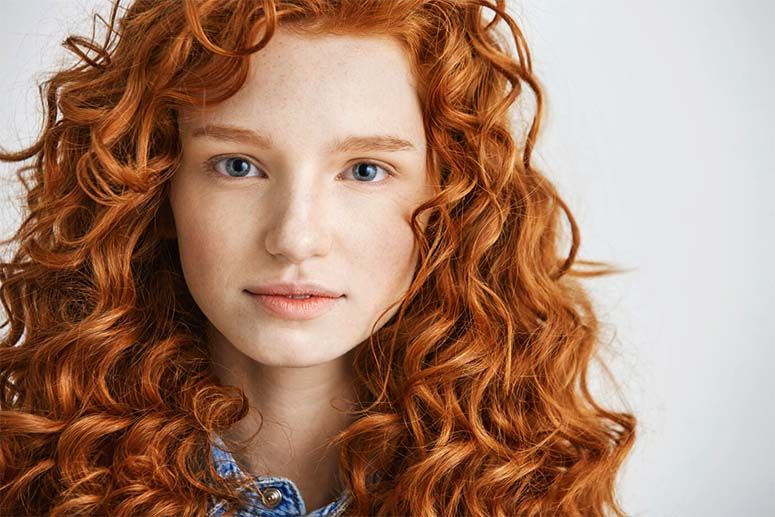Contents
Red hair is a rare and intriguing characteristic that has captured the interest of individuals for centuries.
Its distinct appearance, combined with the unique genetic factors that contribute to its occurrence, has given rise to a multitude of narratives and myths.
This article delves into the origins and causes of red hair, examines the statistical likelihood of possessing this distinct hue, and outlines the physical traits commonly associated with individuals with red hair. So, what are the odds of having red hair?
Additionally, it addresses prevalent stereotypes and health considerations relevant to this vibrant group. We invite you to explore the fascinating realm of red hair.
What Is red hair?
Red hair is a rare and distinctive hair color that arises from specific genetic variations influencing pigmentation, primarily due to the presence of the pheomelanin pigment, which contributes to its unique aesthetic appearance.
This hair color is frequently associated with various characteristics, including lighter skin tones, freckles, and a notable contrast with certain eye colors, which often makes individuals with red hair easily recognizable.
The cultural significance of red hair varies across different societies, where it has been both celebrated and stigmatized, or even mythologized, highlighting its uniqueness and rarity within human biology.
Why do some people have red hair?
The occurrence of red hair in individuals is primarily attributed to genetic factors, particularly the inheritance of recessive genes that regulate melanin production within hair follicles.
The interaction between eumelanin and pheomelanin pigments determines the specific hair color, with red hair resulting from elevated levels of pheomelanin and diminished eumelanin.
Furthermore, environmental factors and ancestral heritage may influence the expression of these genetic traits, resulting in variations in hair color and other related phenotypic characteristics.So, what are the odds of having red hair given these genetic and environmental influences?
What causes red hair?
The causes of red hair are intricately associated with genetic variation, particularly concerning the MC1R gene, which plays a vital role in melanin production within hair follicles.
Mutations in this gene can result in an increased synthesis of pheomelanin, the pigment responsible for the distinctive red coloration, while simultaneously diminishing the production of eumelanin.
This genetic interaction yields the unique pigmentation observed in individuals with red hair, underscoring the significance of heredity in determining hair color traits.
Environmental factors can also influence the expression of this gene – for instance, exposure to sunlight may enhance pigmentation reactions, leading to variations in hue or brightness among individuals with red hair.
Notably, the trait for red hair demonstrates considerable diversity across various ethnic groups, with its prevalence being highest among those of Celtic descent, while it remains relatively uncommon in other populations.
This diversity reflects not only historical migration patterns but also the adaptive functions of pigmentation in differing climates, highlighting the interplay between genetics and environmental factors in producing the remarkable spectrum of hair colors observed worldwide.
What are the odds of having red hair?
The likelihood of possessing red hair varies markedly based on demographic factors, with certain populations displaying a higher propensity for this trait due to genetic predisposition and ancestral heritage.
Research indicates that red hair is most commonly found among individuals of Celtic descent, particularly in regions such as Ireland and Scotland, where its occurrence can exceed 10%.
Conversely, the global prevalence of red hair is estimated to be approximately 1-2%, highlighting its rarity and distinctiveness within the human population.
What are the genetics of red hair?

The genetics of red hair encompasses intricate interactions among multiple genes, with particular emphasis on chromosomes that govern trait inheritance and gene expression.
While the MC1R gene is most frequently associated with red hair, it is important to recognize that red hair is a polygenic trait influenced by various other genetic factors, resulting in a spectrum of hair color variations.
A comprehensive understanding of these genetic mechanisms offers valuable insights into the hereditary patterns observed in families with red-haired individuals.
This includes the complexity of what are the odds of having red hair given the polygenic nature of this trait.
This polygenic characteristic signifies that, in addition to MC1R, other genes may modulate the intensity and shade of red hues by functioning in diverse combinations. For example, genes such as ASIP and TYRP1 play a role in melanin production, which in turn affects pigmentation.
Furthermore, external environmental factors, such as sunlight exposure, can influence the expression of these genes, leading to variations in hair color even among genetically predisposed individuals.
Genetic studies have demonstrated that individuals with red hair may exhibit different shades based on their interactions with environmental factors, underscoring the complex interplay between genetics and environment in determining phenotypic outcomes.
Is red hair more common in certain ethnicities?
Red hair is indeed more prevalent among certain ethnic groups, particularly within Caucasian populations, where it is most commonly observed in individuals of Irish and Scottish descent.
The higher concentration of red hair in these demographics can be attributed to specific genetic factors and historical population dynamics, resulting in a significant cultural importance associated with redheads in these communities.
Studies in population genetics indicate that the frequency of red hair varies considerably across different ethnic groups and geographic regions.
It is estimated that approximately 10% of the Irish population possesses red hair, marking it as one of the highest concentrations globally. Similarly, Scots exhibit a notable prevalence, with reports indicating that up to 13% of their population shares this distinctive trait.
On a global scale, red hair is relatively rare, occurring in only about 1-2% of the worldwide population.
Historical migrations throughout Europe have shaped these distributions, contributing to the development of significant cultural narratives in areas such as Scandinavia and Eastern Europe, where red hair may be regarded with either admiration or as an anomaly.
Societal perceptions of red hair vary widely – in some contexts, it is celebrated in folklore and mythology, while in others, individuals with this hair color may face stereotypes or discrimination.
What are the physical traits associated with red hair?
Individuals with red hair frequently display a variety of distinctive physical traits that encompass more than just hair color. These traits include particular skin tones, eye colors, and other common characteristics that contribute to their overall appearance.
Generally, redheads possess lighter skin, which is often more susceptible to freckles and increased sensitivity to sun exposure due to lower melanin production.
Such physical attributes frequently result in unique aesthetic representations and associations within various cultural contexts.
Do people with red hair have different health risks?
Individuals with red hair may encounter distinct health risks compared to those with other hair colors, particularly in relation to dermatological conditions and sun sensitivity.
Due to the lower levels of eumelanin, individuals with red hair are more prone to sunburns and skin cancers, necessitating heightened precautions when exposed to UV radiation.
Research indicates that red-haired individuals may have an increased likelihood of certain genetic disorders, highlighting the complexities of the genetics associated with red hair and its implications for health.
This increased vulnerability to sun damage not only elevates the risk of skin cancers, such as melanoma, but also contributes to potential premature aging of the skin and heightened sensitivity to dermatological issues like rosacea.
Moreover, red hair is often associated with specific genetic traits that may influence pain tolerance and susceptibility to conditions such as vitiligo or certain forms of arthritis.
Given the intricate relationship between genetic factors and health outcomes, it is essential for individuals with red hair to implement stringent sun protection measures.
This includes the application of high-SPF sunscreens, the use of protective clothing, and regular skin examinations to facilitate the early detection of any adverse changes.
What are the stereotypes and myths about redheads?
Stereotypes and myths regarding individuals with red hair have been perpetuated throughout history, often depicting red hair as an indicator of specific personality traits, behaviors, and cultural affiliations.
Common folklore suggests that individuals with red hair possess fiery tempers and are associated with mystical powers, illustrating the societal perceptions that have developed around this particular hair color.
These cultural references not only reflect the fascination and intrigue that red hair evokes but also emphasize the positive and negative stereotypes associated with this distinctive characteristic.
Are redheads more temperamental?
The stereotype that individuals with red hair are more temperamental is one of the most enduring myths associated with this hair color. Media and popular culture often depict redheads as inherently fiery or passionate individuals.
Although there is no scientific evidence to support this claim, the cultural narrative surrounding red hair has reinforced these beliefs, contributing to societal perceptions of redheads as more volatile or emotional.
This characterization can be traced back to historical representations in art and literature, where characters with red hair frequently embody the fiery nature attributed to their hair color. Such portrayals create a powerful lens through which society views individuals with this distinctive trait, often undermining the complex realities of their personalities.
Consequently, individuals with red hair may find themselves navigating social interactions under the burden of these expectations, which can lead to strained relationships and identity conflicts.
Psychological studies indicate that the internalization of such stereotypes can negatively impact self-esteem and behavioral patterns, highlighting the need for a more nuanced understanding of how cultural narratives shape personal identities.
Do redheads really have higher pain tolerance?

The notion that individuals with red hair possess a higher pain tolerance has garnered significant attention and debate within the scientific community.
Some studies indicate that specific genetic factors associated with red hair may influence pain perception.
Research suggests that individuals with red hair may exhibit a different response to pain, which could be attributed to variations in their genetic makeup, particularly concerning the MC1R gene.
However, further investigation is necessary to fully elucidate this phenomenon.
The MC1R gene is recognized for its critical role in melanin production, which not only determines skin and hair pigmentation but may also influence the body’s pain pathways.
Certain findings suggest that individuals carrying this gene variant may experience heightened sensitivity to specific types of pain while simultaneously exhibiting resistance to others.
This shift in understanding challenges traditional stereotypes that categorize red-haired individuals as either more sensitive or more resilient to discomfort.
As society navigates these intricate genetic narratives, it is essential to address the topic impartially, acknowledging that pain tolerance is a multifactorial trait shaped by a wide array of biological and environmental influences.
Are redheads more likely to have freckles?
Individuals with red hair are statistically more prone to having freckles, a trait closely linked to the lighter pigmentation of their skin and the presence of pheomelanin.
The genetic determinants that contribute to red hair frequently overlap with those influencing the development of freckles, establishing this characteristic as common among red-haired individuals.
Freckles, which arise from uneven distribution of melanin, contribute to the distinctive visual appearance of redheads and often serve as a notable aspect of their overall aesthetic.
These unique skin characteristics can cultivate a shared identity among those who possess them, fostering a sense of community among individuals with red hair.
Culturally, freckles are perceived with varying degrees of admiration and stigma – in some societies, they are celebrated as symbols of youth and vitality, while in others, they may be regarded as imperfections.
This dual perception can significantly influence how individuals with red hair perceive themselves as they navigate societal ideals of beauty.
Ultimately, the combination of red hair and freckles enhances a person’s individuality, contributing to a complex tapestry of self-expression and cultural identity.
You can find our FAQ on the odds of having red hair further down this page.
Discover the captivating world of probabilities and rare events. Quench your curiosity and explore more fascinating subjects at WhatAreTheOddsOf.NET.



